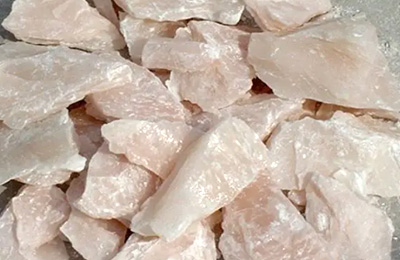Talc is a naturally occurring mineral that is commonly used in a variety of industrial applications. It is known for its softness and ability to absorb moisture, making it ideal for use in cosmetics, paper, paint, plastics, and ceramics. Talc is also used as a filler in many products, and it can improve the performance of other materials.However, before talc can be used in these products, it must first be processed through a series of crushing and grinding steps.
 Talc Crushing:
Talc Crushing:
The first step in processing talc is to mine it from deposits located in different parts of the world. The ore is then crushed, typically using jaw crushers, cone crushers, or impact crushers. Crushing the ore reduces its size and prepares it for further processing.
Talc Grinding:
The grinding process is essential in the processing of talc. Talcum powder is a fine powder made by grinding talc, which is then used in a variety of applications. There are several different types of grinding mills used in talc grinding, including ball mills, trapezoidal mills, vertical mills, and roller mills. The choice of grinding equipment depends on the specific properties of the talc ore and the desired particle size of the final product.
Talc Processing:
Once the talc has been ground into a fine powder, it is processed further to remove any impurities or contaminants. This process may involve the use of air classifiers, magnetic separators, or flotation cells. The goal of talc processing is to produce a high-quality product that meets the requirements of its intended use.
Air Classification:
Air classification is a process that separates particles based on their size and density. The talc powder is fed into an air classifier, which uses air flow to separate the particles based on their size. The larger particles are separated from the smaller ones, and the resulting powder is collected and packaged.
Magnetic Separation:
Magnetic separation is a process that uses magnets to separate materials. In talc processing, magnetic separators are used to remove any iron particles or other magnetic impurities that may be present in the talc powder. The talc powder is fed into a magnetic separator, which attracts and removes the magnetic impurities. The resulting powder is then collected and packaged.
Flotation:
Flotation is a process that separates minerals based on their surface properties. In talc processing, flotation is used to separate talc from other minerals, such as silica and calcite. The talc powder is mixed with water and a frothing agent, and then the mixture is introduced into a flotation cell. Air is injected into the cell, and the frothing agent causes the talc particles to rise to the surface, where they are collected and packaged.
In conclusion, talc is a versatile mineral that is used in a wide range of industrial applications. The process of crushing, grinding, and processing talc is complex and requires careful attention to detail to ensure that the final product meets the desired specifications. Air classification, magnetic separation, and flotation are just a few of the processes used to produce high-quality talc powder.
